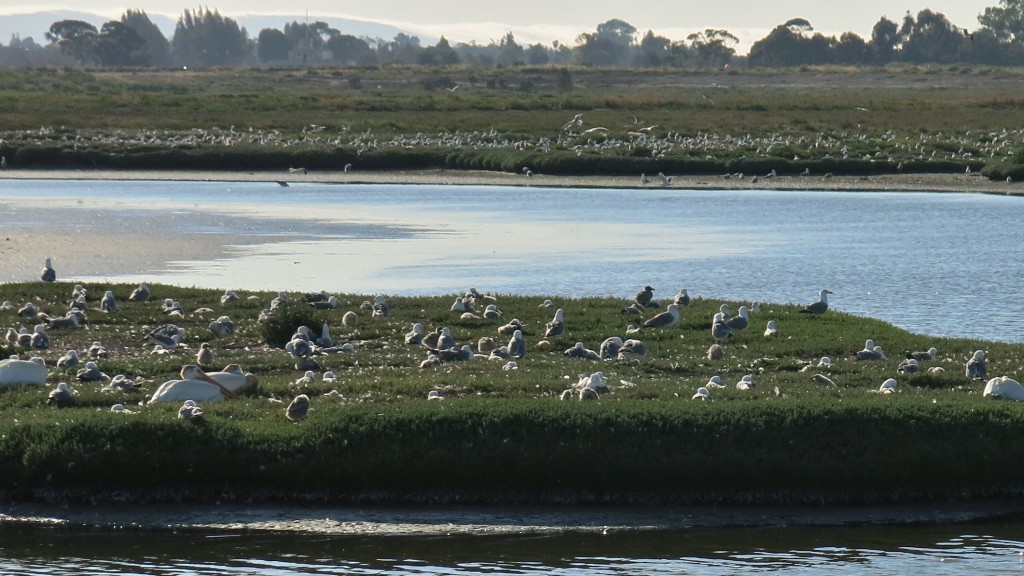It’s nesting season, and this afternoon I managed to take some time out of a busy day to visit two nesting colonies. The first one I visited was the California Gull nesting colony at Baylands Nature Preseve in Palo Alto.
The gull chicks still have their downy feathers, but they are looking pretty big, about three quarters the size of the adults. A few White Pelicans sat along one edge of the colony, seemingly ignoring the gull chicks stumbling around near them.
From there, I drove over to Mountain View where there is an egret nesting colony along a street lined with corporate offices. The only nests I saw had Snowy Egrets on them; but I also saw Great Egrets and a Black-crowned Night-heron, along with the usual suburban passerines. The nests look like Great Blue Heron nests, untidy piles of twigs jammed into tree crotches; and just as with heron nesting colonies, it’s strange to look up thirty feet in the air, and see birds that you’re used to seeing stalking through swamp water.
The sounds coming from the nesting colony were varied and interesting. It turns out egrets make a wider variety of sounds than do Great Blue Herons, everything from raucous cries like you’d imagine a dinosaur would make, to low burbling noises not unlike you might hear at a gull nesting colony.
Definitely a pleasant break in an otherwise too-busy day!

